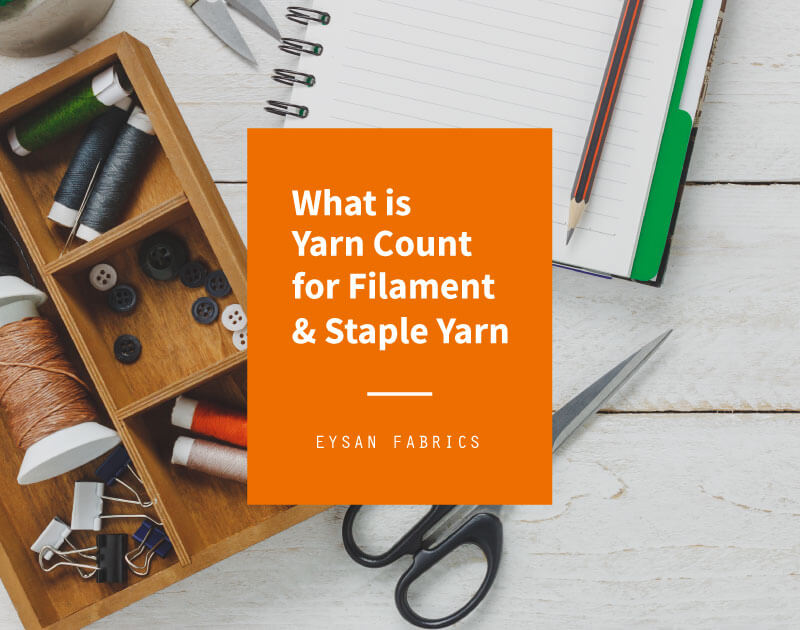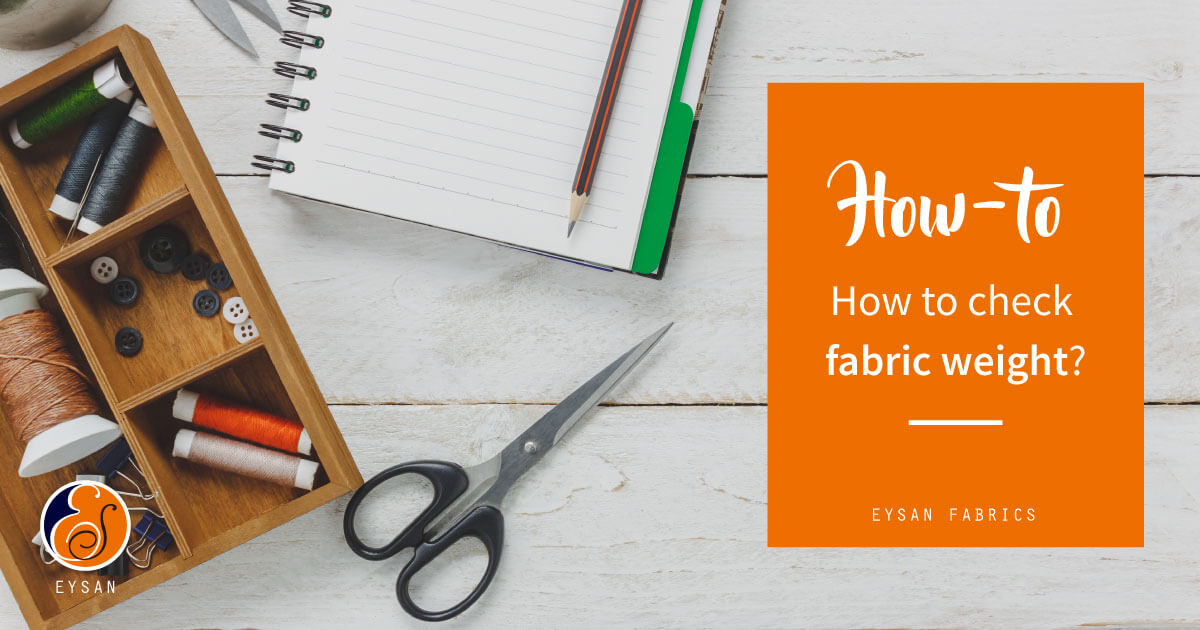
Fabric weight is critical in order to find a suitable material for your needs and ensure the highest quality.
In this article, you will learn about the most commonly used units of measurement for fabric weight, useful conversions between these units, and lastly, how to determine fabric weight with professional tools, or when the fabric swatch is too small, how to determine fabric weight with simple tools you can find around the office or your home.
What is the significance of fabric weight?
![]()
![]()
1. The fabric weight and the fabric’s application have an important relationship
If you have any experience with acquiring fabrics from fabric suppliers, then you know that they will ask you about the fabric weight you’d prefer for the fabric you want. It’s also an essential reference specification for you to find the fabric materials best suited for your application.
2. Fabric weight influences the total amount of product you need to order or will receive in your order
If you buy fabric by the kilo, and if the fabric has a higher weight per unit length then another fabric, then you will receive a shorter total length of the denser fabric compared to the less dense fabric. This may cause a shortage issue if not planned ahead, and if the opposite were true you could end up with a surplus. If you buy fabric by the length, if the fabric weight per unit length is increased, then the total weight of the fabric will increase, so the shipping costs may also increase. This can influence your budgeting of the fabric.
Remarks
- Please be aware that fabric weight is not constant through an entire piece of fabric. There is always a slight deviation from the average throughout the fabric’s area.
- The humidity when weighing the fabric can also affect the fabric weight. Especially for materials that have higher potential for storing water like nylon.

What are the most commonly used units of measurement?
- Gsm (g/m²)
Gram per square meter is the weight of fabric per unit area. This unit of measurement can also be written as g/m². GSM is the most commonly used unit of measurement worldwide.
- Gram per yard (g/y)
Gram per yard is the weight of fabric per unit length (one yard is around 0.91 meter). This unit of measurement is often written as g/y. G/Y is more commonly used in factories.
- Oz per square yard (oz/yd²)
Ounce per square yard is the weight of fabric per unit area (one yard is around 0.91 meter). This unit of measurement is often written as oz/yd². Oz/yd² is more commonly used in the UK.

How to convert between the different units of measurement: g/m², g/y, and oz/yd²
1. Fabric weight conversion formulas
| conversion | formula |
|---|---|
| g/m² to g/y | Full fabric width per inch x g/m² ÷ 43 = g/y |
| g/y to g/m² | g/y ÷ full fabric width per inch x 43 = g/m |
| gsm to oz/yd² | g/m² ÷ 33.906 = oz/yd² |
| oz/yd² to gsm | oz/yd² x 33.906 = g/m² |
Remarks
- The most common knitted fabric width is 60 inches, so this is a good guess to start with, but for exact conversions it is best to measure it yourself.
- Converting cm to inch: cm ÷ 2.54 = inch, or convert online.
2. Online converter
Forget the calculator, convert fabric weight easily online!
- Fabric weight Converter by Wazoodle Fabrics
- oz/yd² to g/m² by ConvertUnits.com
- g/m² to oz/yd² by ConvertUnits.com

How to determine fabric weight?
1. Using a circle cutter and a precision digital scale
A circle cutter is a very common tool in the textile industry for checking fabric weight. It is the most accurate method, given that your fabric swatch is big enough to make the circle cut.
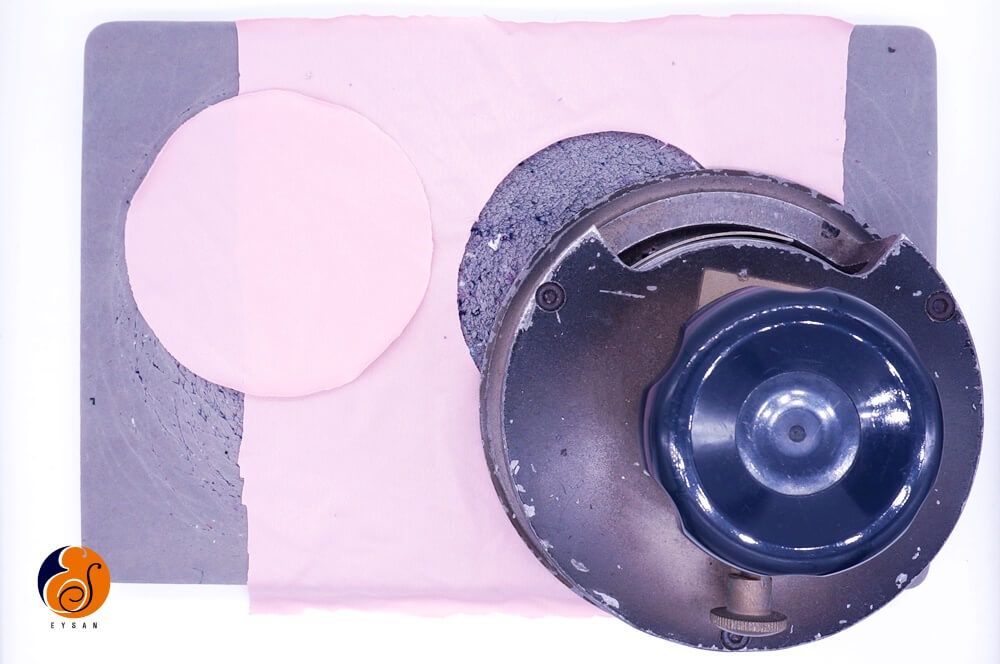
The area of fabric cut from a circle cutter is 0.01 m², so if we weigh it in grams, we calculate the fabric weight by:
(weight of fabric piece in grams) x 100 = gsm
If you have a precision digital scale made special for fabric, it will show the weight in gsm or gram per yard automatically.
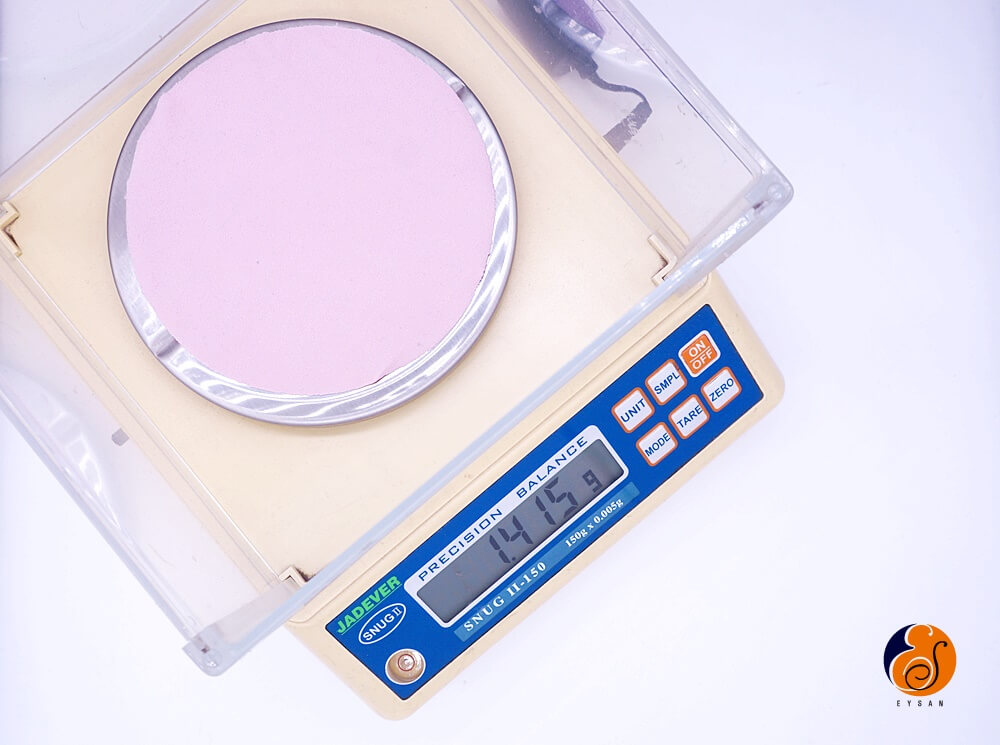
2. Using simple tools found around the office

If your fabric swatch is smaller than 10 x 10 cm, or you don’t have a circle cutter, you can use common tools found on your desk to check the fabric weight: a ruler and a pen! However, it is always best to still have a precision digital scale for more accuracy.
First, draw a rectangle on the fabric with a pen and using the help of a ruler to get accurate right angles. If your fabric swatches are knitted fabric, try to draw dotted lines instead of solid lines, because when drawing solid lines, the pen might stretch the fabric, which makes non straight lines and affects the end result.
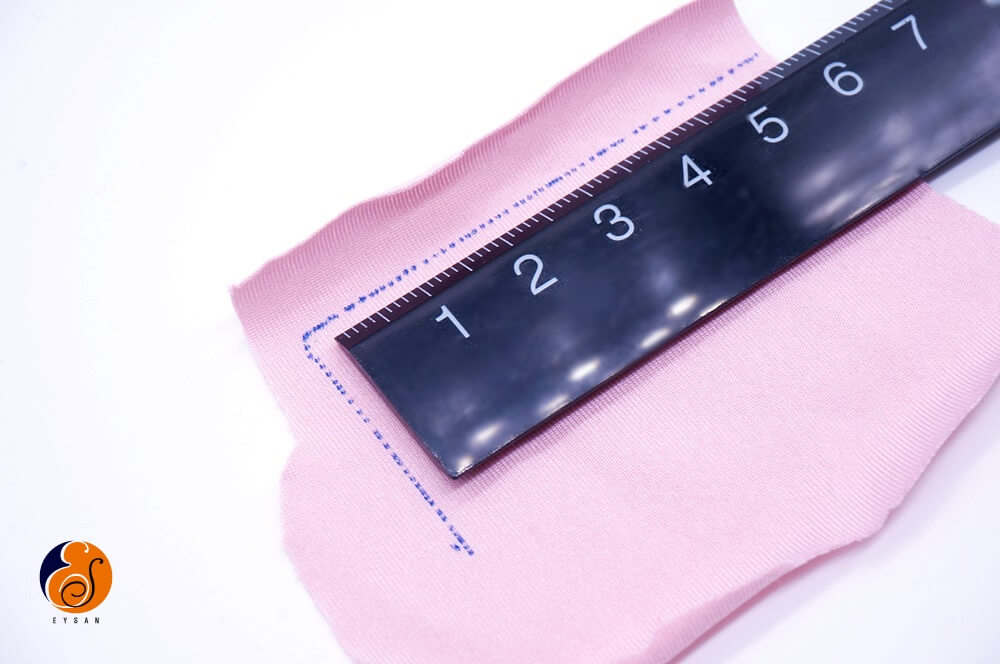
Second, cut the rectangle out of the fabric that you drew on. Then, measure the rectangle’s width and length in cm and calculate the area in (cm²) = (width) x (length). Write it down.
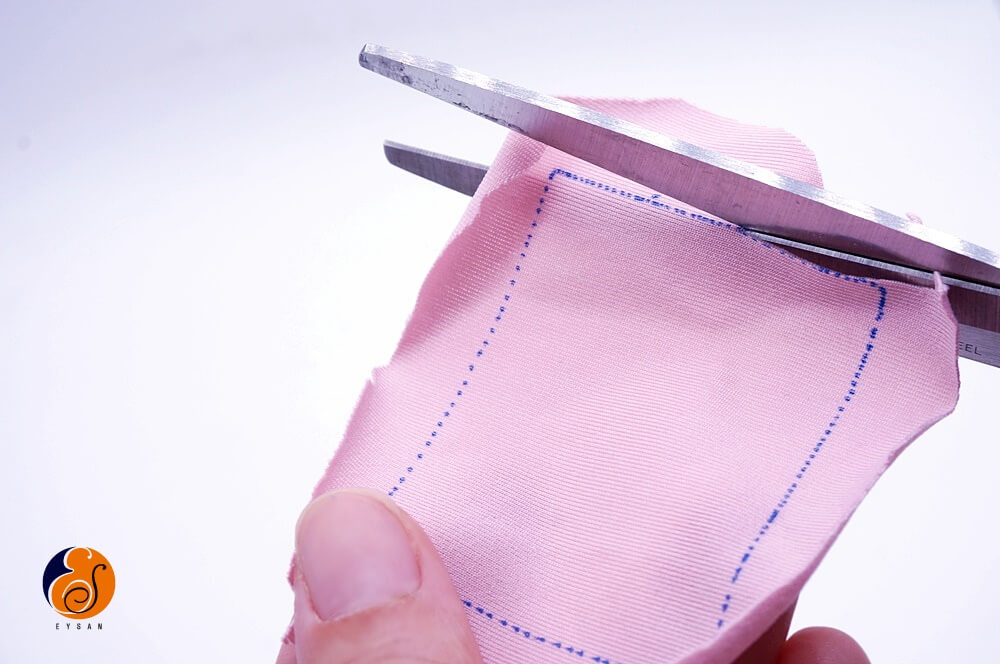
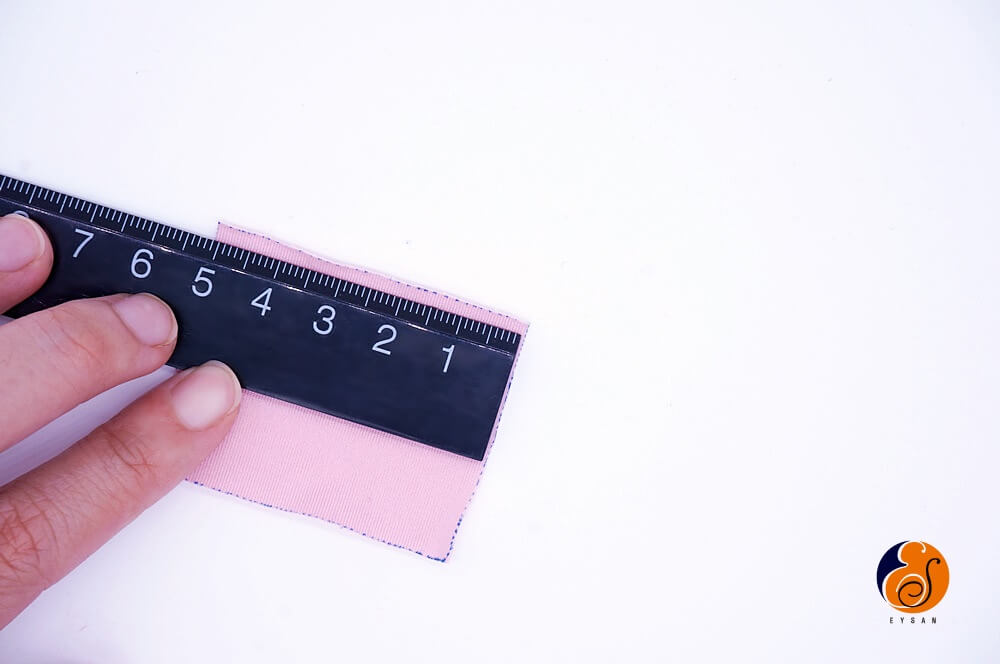
Third, weigh the rectangular fabric swatch with a precision digital scale. Write down the weight in grams.
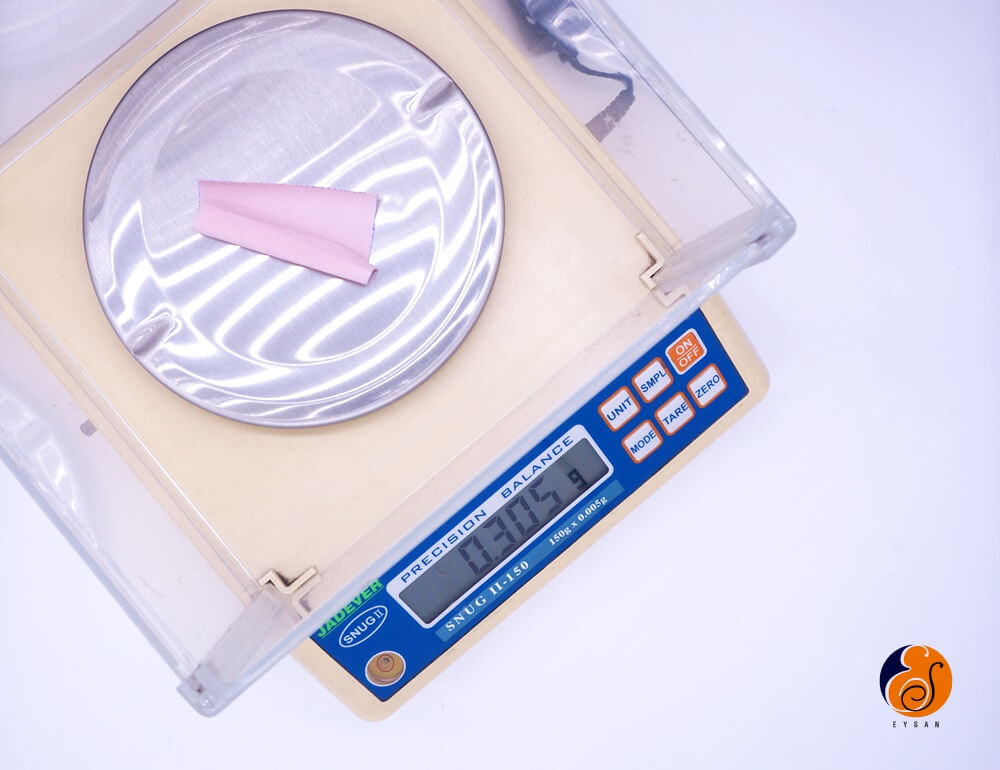
Lastly, calculate the fabric weight with the following formula:
10,000 ÷ (the area of the rectangle(cm²)) x (the weight of the fabric swatch(g)) = (fabric weight (g/m²))
Convert the fabric weight into the units you prefer with the formulas in the previous section!
Too complicated? No digital precision scale?
Not a problem! Let us analyze the fabric for you!
Eysan offers free fabric analysis services, including fabric composition, fabric weight, and knitting structure. (Please note that we only analyze knitted fabrics) Please feel free to send us the sample swatches.
Help me analyze fabric swatch!
Share on facebook
Facebook
Share on google
Google+
Share on linkedin
LinkedIn
Share on pinterest
Pinterest
Share on pocket
Pocket
Share on twitter
Twitter


